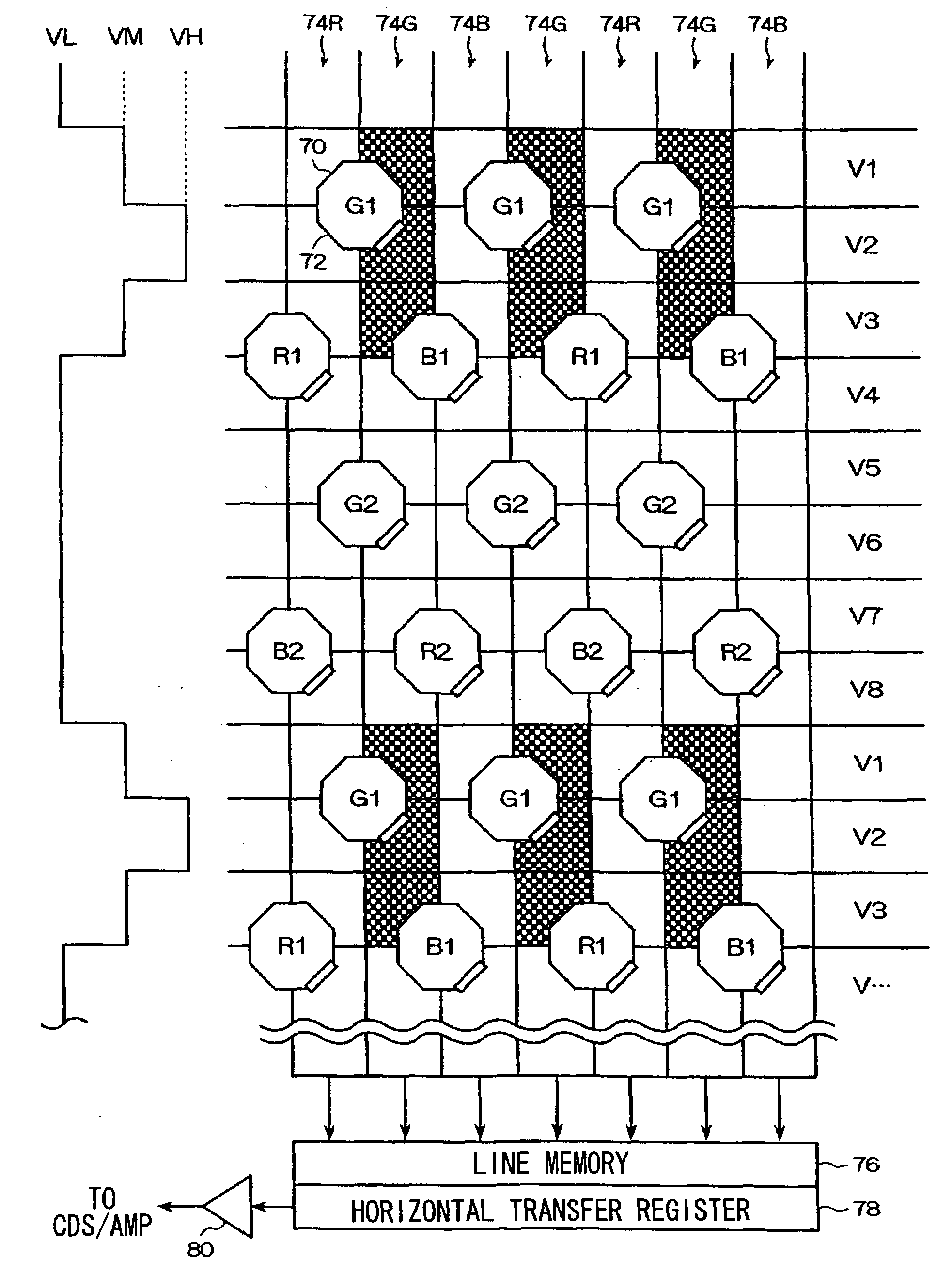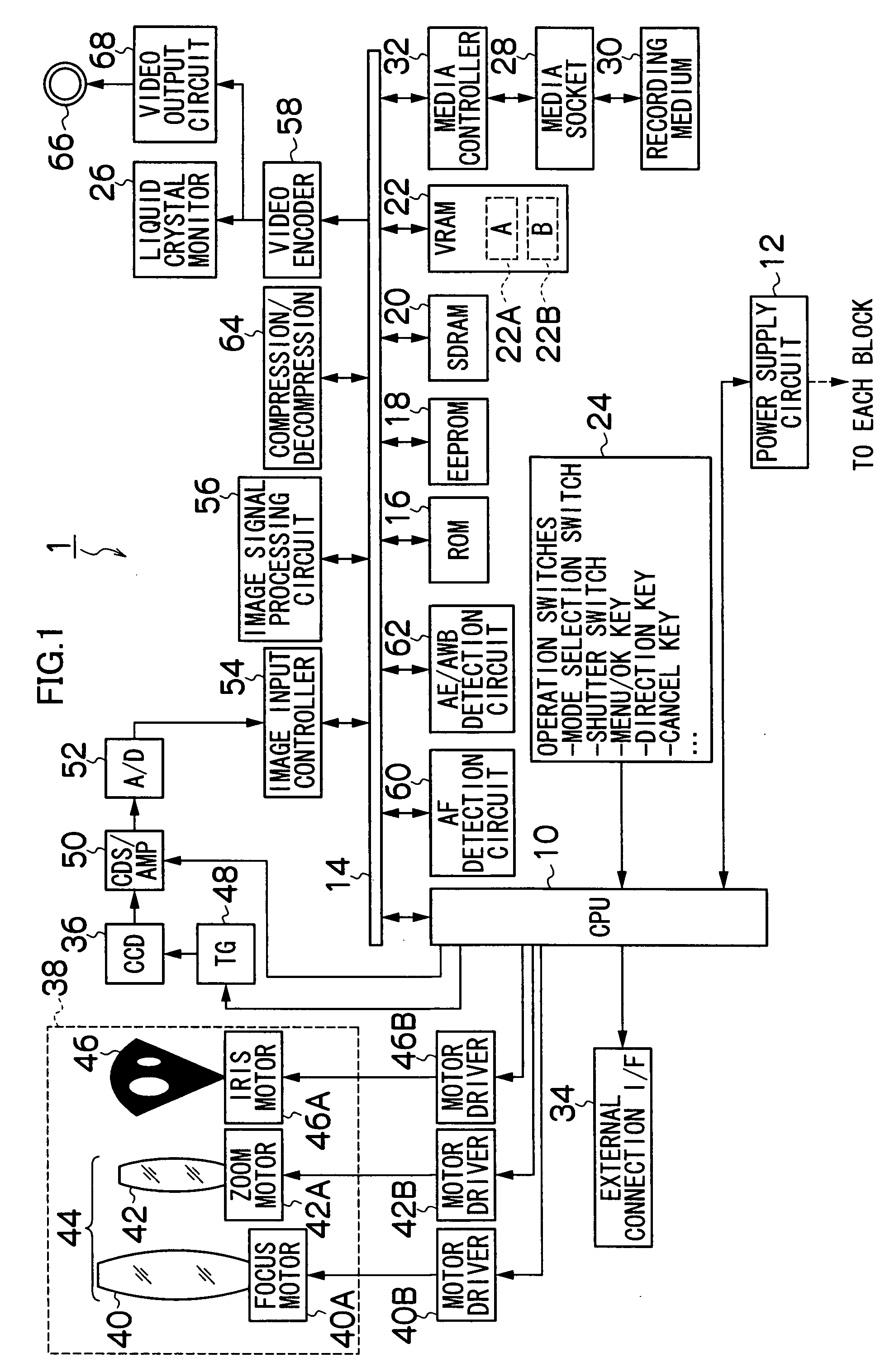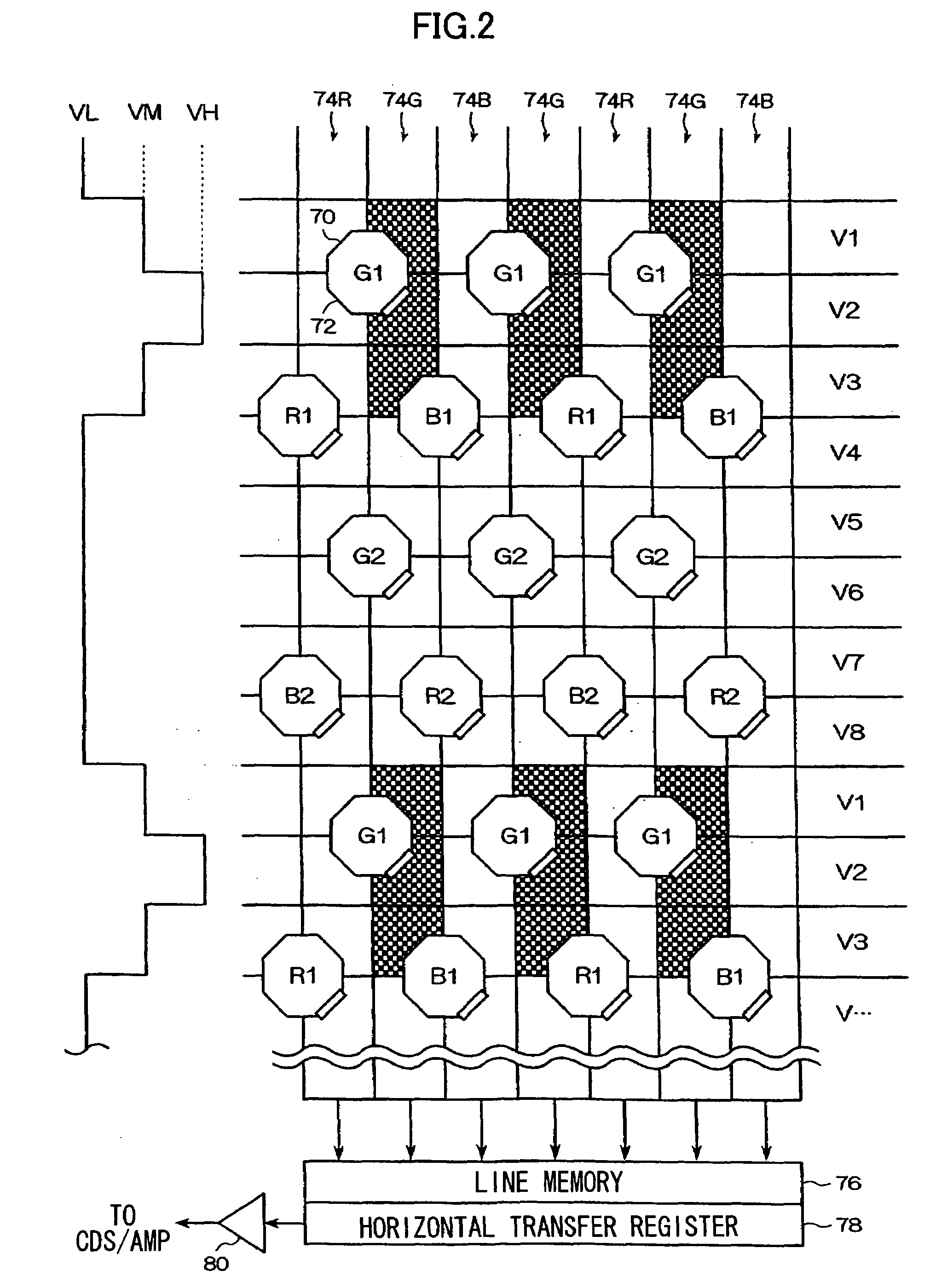Imaging apparatus
- Summary
- Abstract
- Description
- Claims
- Application Information
AI Technical Summary
Benefits of technology
Problems solved by technology
Method used
Image
Examples
first embodiment
[0110]FIG. 12 shows a flowchart illustrating an image output adjustment method. First, while a through-movie picture is displayed on the liquid crystal monitor 26, the CPU 10 determines whether the pixel addition mode is G-pixel double addition mode (step S100). If the pixel addition mode is G-pixel double addition mode (YES at step S100), it is determined whether the pixel addition mode which was set in generating the image of the frame preceding the through-movie picture was also G-pixel double addition mode (step S102). The time at which normal addition mode is changed to G-pixel double addition mode is stored in the memory 20 by the CPU 10, for example. If the pixel addition mode for generating the image of the previous frame was also G-pixel double addition mode (YES at step S102), processing is terminated. On the other hand, if the pixel addition mode for generating the image of the previous frame was not normal addition mode as illustrated at time T20 in FIG. 13 (NO at step S...
second embodiment
[0111]FIG. 14 shows a flowchart illustrating the image output adjustment method. First, while a through-movie picture is displayed on the liquid crystal monitor 26, the CPU 10 determines whether the pixel addition mode is G-pixel double addition mode (step S110). If the pixel addition mode is G-pixel double addition mode (YES at step S110), it is determined whether the pixel addition mode which was set in generating the image of the frame preceding the through-movie picture was also G-pixel double addition mode (step S112). The time at which normal addition mode is switched to G-pixel double addition mode is stored in the memory 20 by the CPU 10, for example. If the pixel addition mode which was set in generating the image of the previous frame was also G-pixel double addition mode (YES at step S112), processing is terminated. On the other hand, if the pixel addition mode which was set in generating the image of the previous frame was not normal addition mode (NO at step S112), digi...
third embodiment
[0112]FIG. 15 shows a flowchart illustrating the image output adjustment method. First, while a through-movie picture is displayed on the liquid crystal monitor 26, the CPU 10 determines whether the pixel addition mode is G-pixel double addition mode (step S120). If the pixel addition mode is G-pixel double addition mode (YES at step S120), it is determined whether the pixel addition mode which was set in vertical transfer of pixel signals when generating the image of the frame preceding the through-movie picture was also G-pixel double addition mode (step S122). The time at which normal addition mode is switched to G-pixel double addition mode is stored in the memory 20 by the CPU 10, for example. If the pixel addition mode for generating the image of the previous frame was also G-pixel double addition mode (YES at step S122), processing is terminated. However, if the pixel addition mode for generating the image of the previous frame was not normal addition mode (NO at step S122), ...
PUM
 Login to View More
Login to View More Abstract
Description
Claims
Application Information
 Login to View More
Login to View More - R&D
- Intellectual Property
- Life Sciences
- Materials
- Tech Scout
- Unparalleled Data Quality
- Higher Quality Content
- 60% Fewer Hallucinations
Browse by: Latest US Patents, China's latest patents, Technical Efficacy Thesaurus, Application Domain, Technology Topic, Popular Technical Reports.
© 2025 PatSnap. All rights reserved.Legal|Privacy policy|Modern Slavery Act Transparency Statement|Sitemap|About US| Contact US: help@patsnap.com



